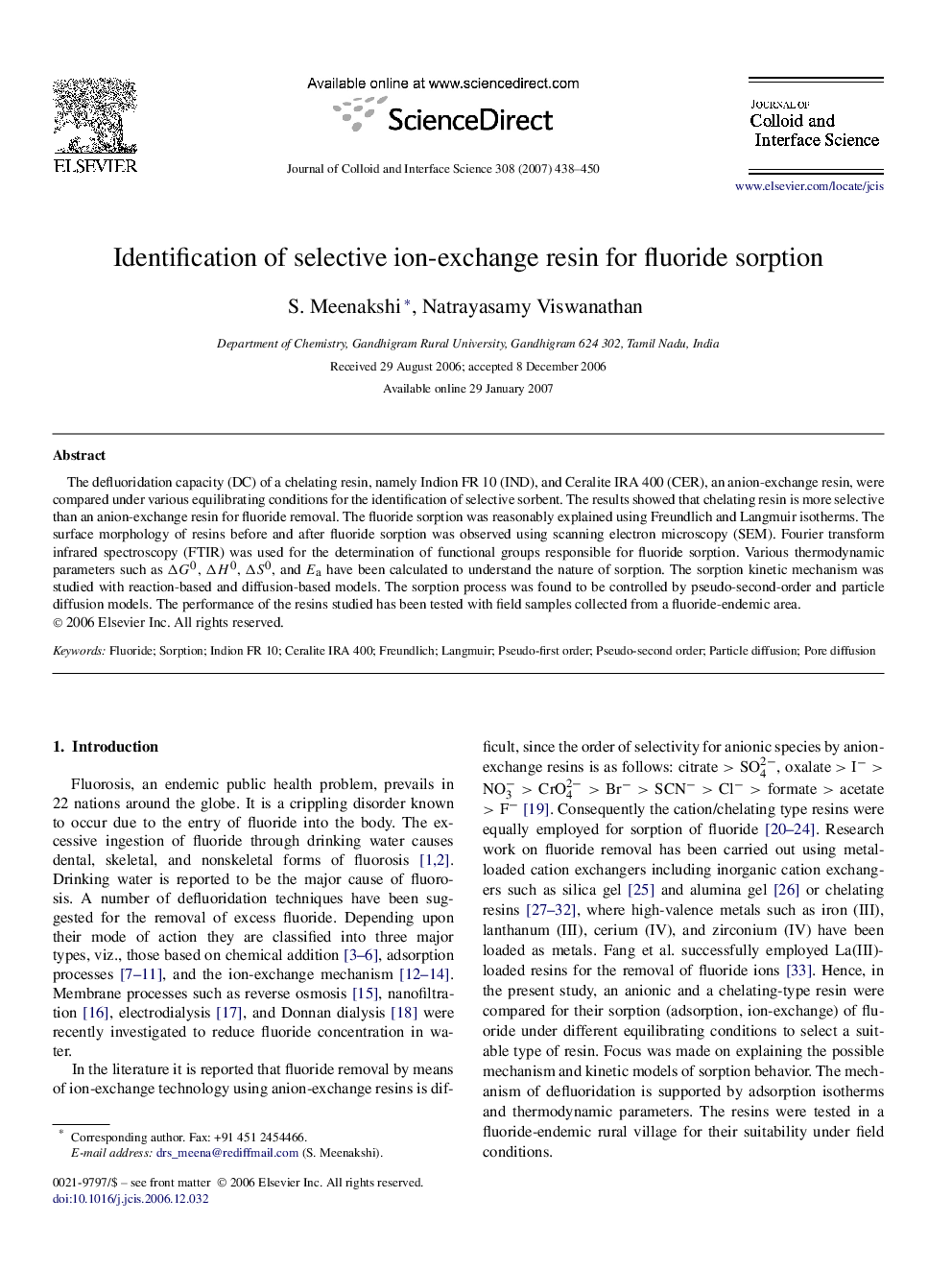| Article ID | Journal | Published Year | Pages | File Type |
|---|---|---|---|---|
| 613050 | Journal of Colloid and Interface Science | 2007 | 13 Pages |
The defluoridation capacity (DC) of a chelating resin, namely Indion FR 10 (IND), and Ceralite IRA 400 (CER), an anion-exchange resin, were compared under various equilibrating conditions for the identification of selective sorbent. The results showed that chelating resin is more selective than an anion-exchange resin for fluoride removal. The fluoride sorption was reasonably explained using Freundlich and Langmuir isotherms. The surface morphology of resins before and after fluoride sorption was observed using scanning electron microscopy (SEM). Fourier transform infrared spectroscopy (FTIR) was used for the determination of functional groups responsible for fluoride sorption. Various thermodynamic parameters such as ΔG0ΔG0, ΔH0ΔH0, ΔS0ΔS0, and EaEa have been calculated to understand the nature of sorption. The sorption kinetic mechanism was studied with reaction-based and diffusion-based models. The sorption process was found to be controlled by pseudo-second-order and particle diffusion models. The performance of the resins studied has been tested with field samples collected from a fluoride-endemic area.
Graphical abstract Resin-SO3H (chelating resin) + F−(aq) Resin-SO3Hδ+⋯Fδ−, Resin-Cl (anion-exchange resin) + F−(aq) Resin-F + Cl−. The adsorption mechanism is more selective for fluoride removal than the ion-exchange process even from the dilute solutions of fluoride ion, as the ion-exchange mechanism depends on the concentrations of ions, which are normally present in water with excess of fluoride.Figure optionsDownload full-size imageDownload as PowerPoint slideFigure optionsDownload full-size imageDownload as PowerPoint slide
